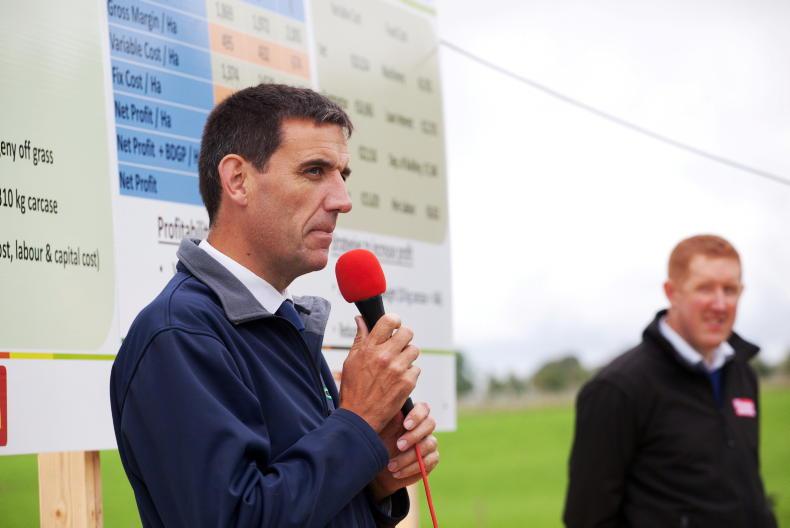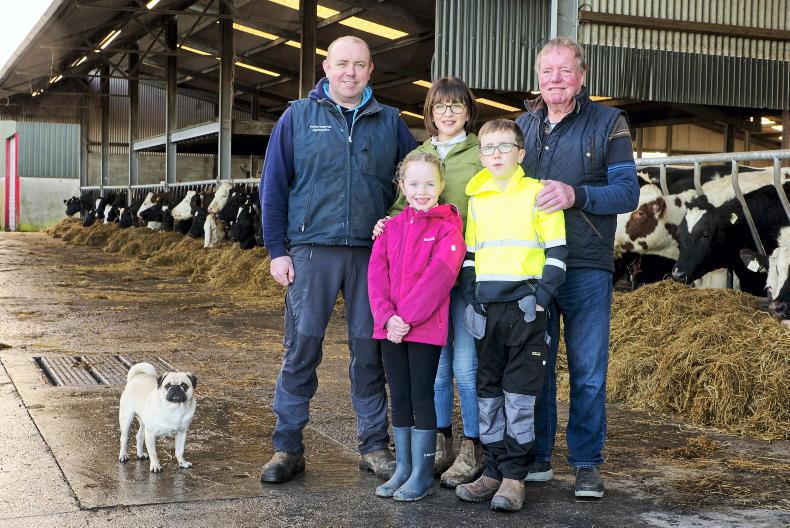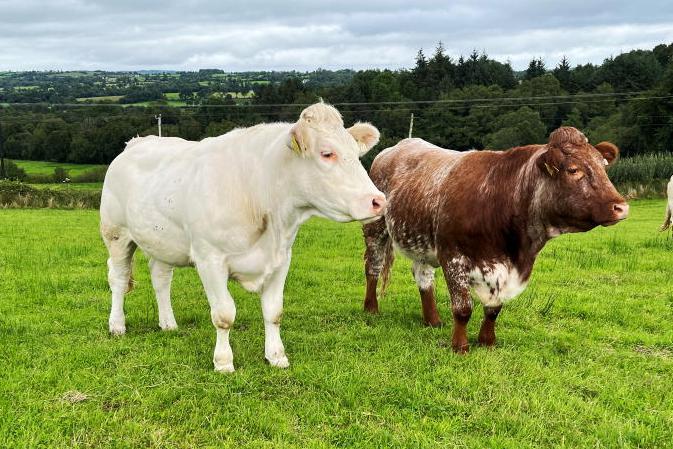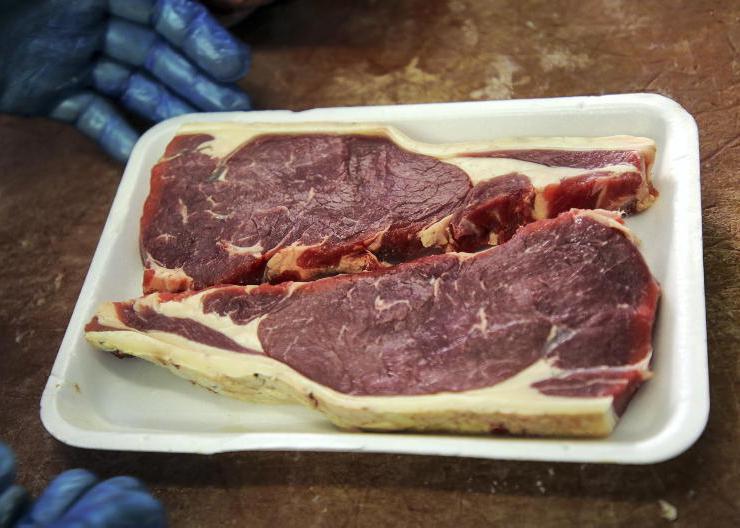Calving suckler heifers at 36 instead of 24 months leaves behind €250/ha in profit margin across the entire farm, says Teagasc.
Teagasc head of drystock knowledge transfer Pearse Kelly told suckler farmers at a recent beef seminar in Wexford that they are losing 75% of the net margin on all of their cows in the herd, not just the heifers, by waiting to calve their replacements at three years of age.
“So, if they had a 50-cow herd and they were calving at 24 months and they said 'I’ll calve the heifers at 36 months', they lose three-quarters of the profit on the 50 cows,” he claimed.

Some 75% of the margin on the entire suckler herd is lost by calving its replacement heifers at 36 months rather than 24, says Teagasc.
Kelly said the “innovation” of calving heifers at 24 months has “been around for donkey’s years, but, unfortunately, less than 25% of our suckler heifers calve at 22 to 26 months”.
Emissions
The Teagasc representative also suggested that by calving heifers at 24 rather than 36 months, farmers will “have met half the target, the 12% [cut]” when it comes to agriculture’s legally binding emissions ceiling of 25% reduction by 2030.
“It’s hard not to accept [the merits of earlier calving] when you look at the statistics,” he said.
Kelly presented Irish Cattle Breeding Federation (ICBF) data covering 131,000 sucker herd replacement heifers that were born since 2011.
He said the ICBF followed these heifers’ “life history the whole way through” and used the figures to address what he termed as “myths” which farmers have in relation to calving heifers at two years of age.
Mature weight
“One of the myths which goes around is it stunts her growth and she won’t stay in the herd. That if you calve a heifer at two years of age, she’ll never grow into a full cow.
“A heifer takes until her fifth year to be a full cow. What they found was, and this is data coming from the BEEP, what they found was actually the opposite.
"The heifers that calved at between 23 and 26 months, their mature weight was 708kg, whereas the heifer that calved at 31 to 35 months, their mature weight was 692kg,” he said.

Teagasc head of drystock knowledge transfer Pearse Kelly. \ David Ruffles
On longevity, Kelly said “the really interesting thing was” that by the time of their fifth calves, 39% of the heifers who calved at 24 months were still in the herd, while only 4% of those calved at 36 months were.
“The heifers that calved down at three years of age or older are very hard to keep in the herd long term. Whereas your younger heifer calved down, makes a very big difference,” he said.
Calving problems
He said farmers often assume that there’ll be “too many problems” with two-year-old heifers at calving.
“Heifers per se, compared to cows, are hard to calve. We all know that, but there’s no real difference between calving a heifer at 36 or 31 and two years. It’s as little as 5%. They need a little bit more assistance,” he said.
Kelly said the younger calved heifers also have better rates of getting back in-calf when compared with those calved at three years.
He described how the ICBF data shows that when it comes to having their second calf, those who had their first at 24 months calved down 383 days later, whereas those who had their first at 36 months calved down 392 days later.
“There are all these figures that are there to back up calving heifers at 24 months of age. It’s an innovation, but it’s an innovation that’s not really being taken up at farm level because I think there’s a lot of people, call a spade a spade, they’re not getting heifers into a good enough weight in their first 12 months, to get them in-calf,” he claimed.
Calving suckler heifers at 36 instead of 24 months leaves behind €250/ha in profit margin across the entire farm, says Teagasc.
Teagasc head of drystock knowledge transfer Pearse Kelly told suckler farmers at a recent beef seminar in Wexford that they are losing 75% of the net margin on all of their cows in the herd, not just the heifers, by waiting to calve their replacements at three years of age.
“So, if they had a 50-cow herd and they were calving at 24 months and they said 'I’ll calve the heifers at 36 months', they lose three-quarters of the profit on the 50 cows,” he claimed.

Some 75% of the margin on the entire suckler herd is lost by calving its replacement heifers at 36 months rather than 24, says Teagasc.
Kelly said the “innovation” of calving heifers at 24 months has “been around for donkey’s years, but, unfortunately, less than 25% of our suckler heifers calve at 22 to 26 months”.
Emissions
The Teagasc representative also suggested that by calving heifers at 24 rather than 36 months, farmers will “have met half the target, the 12% [cut]” when it comes to agriculture’s legally binding emissions ceiling of 25% reduction by 2030.
“It’s hard not to accept [the merits of earlier calving] when you look at the statistics,” he said.
Kelly presented Irish Cattle Breeding Federation (ICBF) data covering 131,000 sucker herd replacement heifers that were born since 2011.
He said the ICBF followed these heifers’ “life history the whole way through” and used the figures to address what he termed as “myths” which farmers have in relation to calving heifers at two years of age.
Mature weight
“One of the myths which goes around is it stunts her growth and she won’t stay in the herd. That if you calve a heifer at two years of age, she’ll never grow into a full cow.
“A heifer takes until her fifth year to be a full cow. What they found was, and this is data coming from the BEEP, what they found was actually the opposite.
"The heifers that calved at between 23 and 26 months, their mature weight was 708kg, whereas the heifer that calved at 31 to 35 months, their mature weight was 692kg,” he said.

Teagasc head of drystock knowledge transfer Pearse Kelly. \ David Ruffles
On longevity, Kelly said “the really interesting thing was” that by the time of their fifth calves, 39% of the heifers who calved at 24 months were still in the herd, while only 4% of those calved at 36 months were.
“The heifers that calved down at three years of age or older are very hard to keep in the herd long term. Whereas your younger heifer calved down, makes a very big difference,” he said.
Calving problems
He said farmers often assume that there’ll be “too many problems” with two-year-old heifers at calving.
“Heifers per se, compared to cows, are hard to calve. We all know that, but there’s no real difference between calving a heifer at 36 or 31 and two years. It’s as little as 5%. They need a little bit more assistance,” he said.
Kelly said the younger calved heifers also have better rates of getting back in-calf when compared with those calved at three years.
He described how the ICBF data shows that when it comes to having their second calf, those who had their first at 24 months calved down 383 days later, whereas those who had their first at 36 months calved down 392 days later.
“There are all these figures that are there to back up calving heifers at 24 months of age. It’s an innovation, but it’s an innovation that’s not really being taken up at farm level because I think there’s a lot of people, call a spade a spade, they’re not getting heifers into a good enough weight in their first 12 months, to get them in-calf,” he claimed.











SHARING OPTIONS